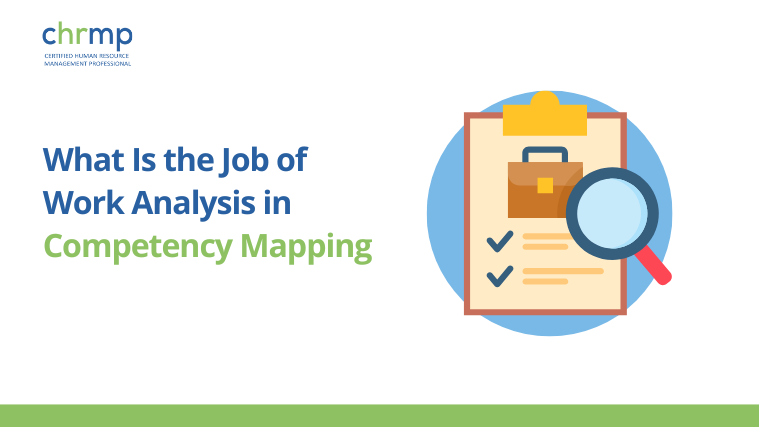

Fostering quick learning in your organization is one of the most important aspects to increase productivity and efficiency.
It also helps the entire organization to grasp the information and or upcoming technology and make quick decisions. Quick decision may help to expedite the progress of an entire organization. Though, it is true that decision taken in great hurry without considering it in detail may hurt you sometimes. However, in today’s competitive world, the delayed decisions may prove to be equally unproductive.
My experience with quick learning is that it is a two – step process. The first is grasping the learning and second is its total integration with your inner self. The learning, thus, is ingrained and helps in taking quick decision through sub-conscious mind.
Also, the technology is changing at a very fast pace. Unless an entire organization discovers new products, processes or adopts to newly discovered ones, it may become redundant.
An entire organization should indulge in life-long process of quick learning and updating it to stay commercially viable.
For more information on author’s view, please refer to the following blogs published earlier by us:
Let us quickly go through the latest literature available on how to foster quick learning in your organization.
The website balancecareers.com lists 16 ways to foster continuous learning in your organization. The roles and responsibilities of leaders in this respect are huge. For this to happen, they should clearly know what are the latest trends in continuous learning in the field related to their organization. The next step is to lead the changes in quick learning.
Change Management Training and Development A Practical Approach to Organizational Change by David P. King ; The first step in any organizational change initiative is to identify what needs changing. This requires understanding the entire organization’s current state and identifying its future vision. It is important to understand why people behave the way they do and what motivates them. For example, if employees are not motivated to perform at peak levels, then it may be necessary to improve communication, remove barriers to performance, provide recognition and rewards, or offer training.
Similarly, enterprisesproject.com lists 7 ways to foster culture of continuous learning in an IT entire organization. We should note that great emphasis on quick learning is very vital in such organizations.
The website deloitte.com is of the opinion that quick learning must be the priority for all the organizations. This is in view of the rapidly advancing technology and pressures on the organizations to continue to have an edge.
John Bersing in his article “5 ways to building a learning organization” has elaborated in detail, how to go ahead in this direction. He is of the opinion that companies, which adopt formalized informal quick learning programs, out perform others. These programs may be coaching, on-demand training and performance support tools. If someone has acquired expertise on their own, and the same is beneficial to the entire organization, they should be awarded.
Business leaders / company leaders are people who have the ability to influence others through a business processes in order to achieve organizational goals. They can be internal or external to an organization. Business leaders can also be classified into two categories: strategic business leaders and operational business leaders. Strategic business leaders are involved in planning and directing the overall strategy for an organization. Operational business leaders focus on day-to-day operations within their department or division.
Business leaders / company leaders may be required to possess certain leadership qualities, such as communication skills, decision making abilities and problem solving abilities creating innovative companies.
David A. Garvin in “Harvard Business Review” hbr.org, has elaborated on a learning organization. A learning organization is capable of creating, acquiring and transferring knowledge. It should also be able to modify its behavior to reflect new knowledge and insights.
Learning goals are the objectives that an individual wishes to achieve during his/her education. They are usually described as a series of statements, such as “I want to learn how to use Microsoft Word.” The learning goal is often accompanied by a set of learning activities or skills that will help you achieve your stated goal. For example, if you have a learning goal of becoming a better writer, then you might need to practice writing and editing documents using different tools, including Microsoft Word.
Developing a growth mindset in your organization, is the most important facet as per blog.smarp.com.
However, the author has formulated the following 7 tips to foster quick learning in your organization
In order to evolve a quick learning strategy in your organization, the following may be attempted.
Learning styles are ways in which people learn best only on experimenting and practicing can one find a successful learning process for themselves. There are four main types of learners: visual, auditory, kinaesthetic and verbal. Visual learners tend to prefer watching videos over reading books; auditory learners enjoy listening to music while they read; kinaesthetic learners like to do things hands-on and feel more comfortable with physical activity than mental work; and verbal learners prefer talking about what they’re learning rather than doing it themselves.
The most common type of learner is visual, but not all learners are alike. Some people can only learn through one way, while others may be able to learn from multiple sources.
Introduce quick learning clubs to foster learning in your organization. The author recalls distinctly the serious problem of quality in 1980’s in a major steel making organization in India. They made efforts to tackle this problem by introducing quality circles across the different shops.
The workforce may read together, talk together, learn together and test each other together in these clubs. Fix a particular time slot for club meetings in your organization on daily, bi-weekly or tri-weekly basis.
We may form these clubs across the organization through inter and intra department. This will help in the integration as well as better overall awareness about the urgent learning needs of the organization. This will also foster a sense of belonging. Remember the proverb “Together we succeed”.
company culture refers to the shared values, beliefs, practices and traditions that make up the identity of an organization. It includes its mission statement, vision, core values, policies, procedures, philosophies, ethics, customs, history, symbols, and other elements like company values , employee morale etc., that give it a unique character. A strong company culture helps employees understand what the organization stands for and why they should care about it.
A company’s culture can be either positive or negative depending on whether it promotes or stifles creativity.
Today, many organizations have adopted remote work policies to reduce costs, increase productivity, improve team dynamics and foster greater workplace flexibility.
Remote workers are generally considered part of the gig economy. However, there are some differences between traditional freelancers and remote workers. Freelance workers are self-employed, whereas remote workers are employed by third parties.
Quick learning organizations are built assiduously through well-conceived plans, and implementing them carefully.
All efforts should be made to build an appropriate learning culture through the following ways-
Learning can not be foisted upon anybody. Hence, the best option is to motivate people to have their own intrinsic and inspiring goals, best suited to them. These self-formed goals may prove to be a great booster, if the individuals concerned become obsessed with it.
These may be woven together to build into a major learning break through.
The author is of the opinion that top managers and leaders have to play a role in this. They should be able to identify such individuals and also their intrinsic interests to ignite sparks. This spark created in time, in the individuals and in teams, may prove to be hugely beneficial.
Providing the alternative resource materials like journals, CDs, webinar and online learning tools, is essential for fostering quick learning in any organization.
Making provision for learners to attend conferences, workshops and or even short term courses may also be attempted.
Organizational Change Management: A Manager’s Handbook by Robert E. This book is written for managers who want to understand how to manage organizational change effectively. It provides a clear explanation of the theories and practices behind organizational change management. It covers topics such as defining change, managing change, communicating about change, leading change, planning for change, implementing change, evaluating change and dealing with resistance to change.
Keen competition may not always be good especially in the case of a mediocre learner who has newly learnt a skill. Comparing him to a veteran in that skill may prove to be a bitter experience.
Also, the individuals may be different from each other in their learning speeds.
Hence, author is of the opinion that comparison and competition should be avoided.
However, if at all, competitiveness is to be facilitated among employees for quick learning, it should be done among equals.
Employee training and development in human resource management is a theory and practice of human resources management. It is also a set of principles that are followed in order to achieve certain goals. This book provides a detailed discussion of employee training and development in human resources management.
It may also be done, when the new learners have gained confidence, and appeared to have reached the level of veterans.
Monitoring the process of quick learning in the organization is very important facet.
Learning and Development in HRM An Integrated Approach by John C. Maxwell ;The first step is to understand what motivates people. It’s not just money or status; it’s also recognition, autonomy, purpose, and mastery. If you don’t know what motivates your people, you won’t know how to motivate them. You need to know their strengths as well as their weaknesses. Then you can help them develop a plan for growth that will lead to success.
It will be prudent, if a 360 degree feedback mechanism is also evolved. The feedback may be taken from peers, boss and also the subordinates.
Based on the feedback, the corrective actions may be taken.
Ripples Learning is continuously striving to add value to knowledge pertaining to human resource field, through its blogs and different state of the art programs.
For knowing more about us, please go through the following websites:
www.chrmp.com | www.resultslab.in | www.rippleslearning.com
How do you foster learning in your organization?
How can organizational learning be improved?
Organizational learning is an important part of any business, especially for small businesses. Learning how to learn is one of the biggest challenges facing entrepreneurs today. The key to successful organizational learning is to focus on the right things and delegate responsibility to those who need it.
What are the 10 characteristics of a learning organization ?
I think this is a very simple answer, but I don’t have time to write a full essay.
If you want to improve your team’s ability to learn, then simply give them the opportunity to learn.

© 2007-2025 CHRMP| All Rights Reserved | Powered by Ripples Learning & Research Private Limited
